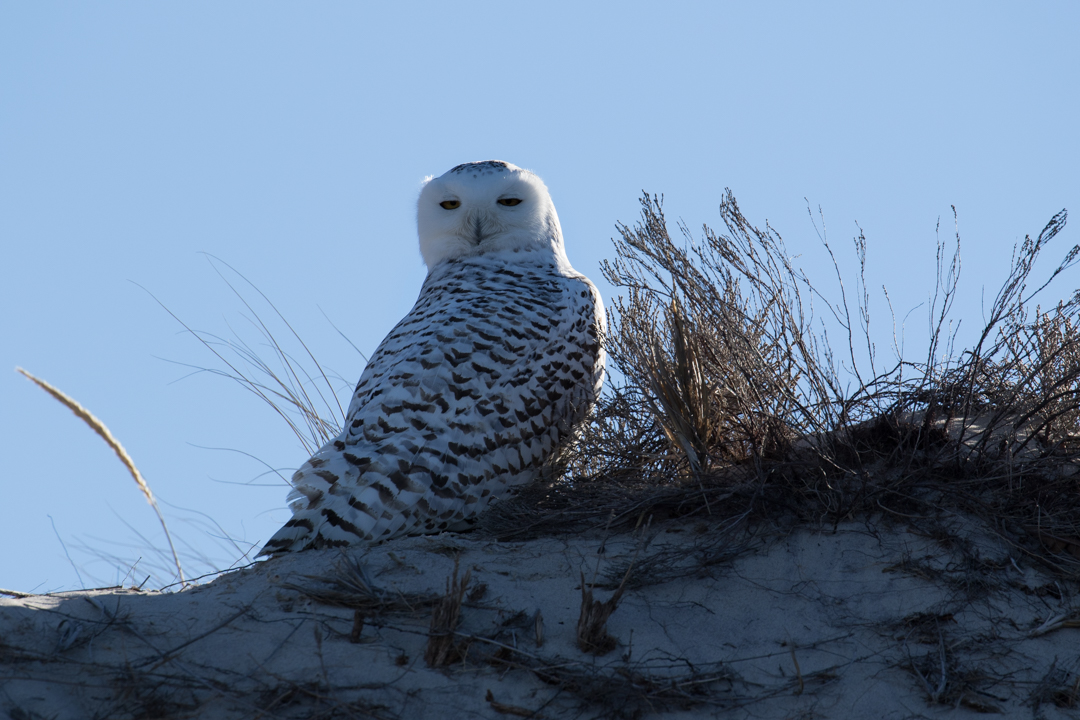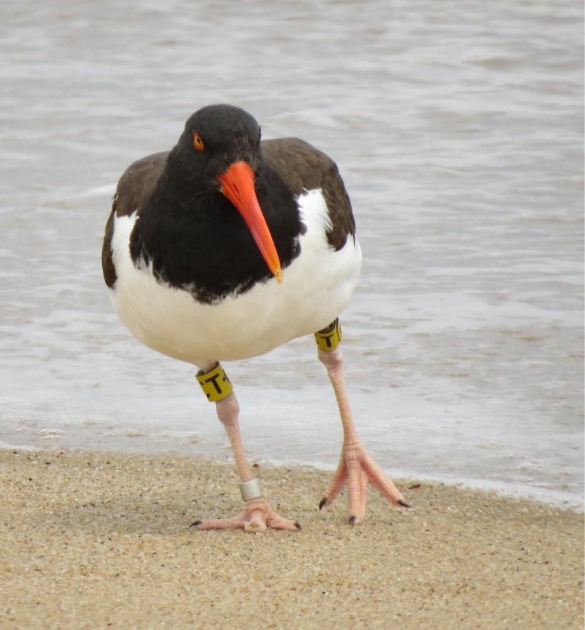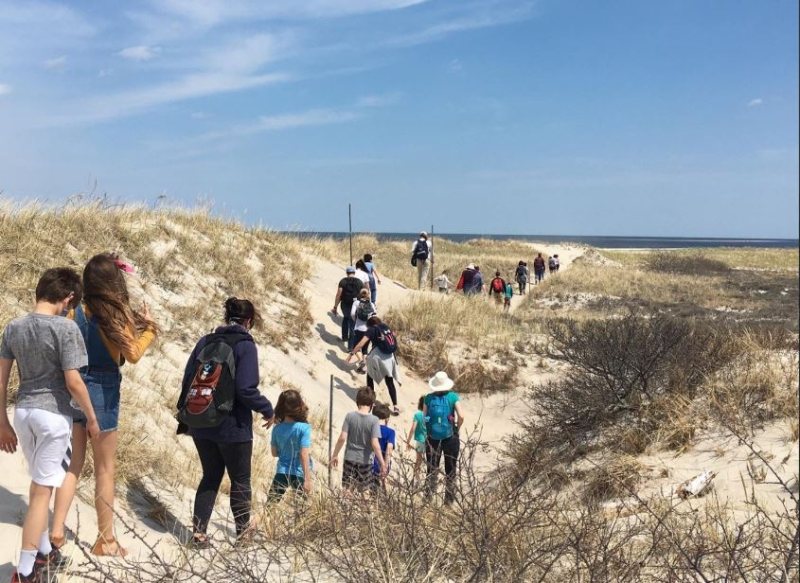During the colder months, the leaves have fallen and suddenly the views from Trustees trails are much more expansive. Winter is a great time of year for hiking and wildlife viewing—and with fewer leaves among which critters can hide, a keen observer can spot a variety of wildlife on a winter outing.
The chance to see wildlife is a great incentive to get outside and enjoy nature. But, as winter hiking gains in popularity, it’s more important than ever to be respectful of wildlife and the habitats that support them. Whether you’re a seasoned wildlife watcher or are hitting the trail for the first time, here are some tips to ensure your outdoor time is fun and safe for both you and the wildlife you might encounter along the trail. (And most of these tips apply to any time of year, no matter when you’re out and about on our trails!)

Sleepy Snowy Owl, by Ryan Pennesi
Respect the habitat
Think of a visit to the woods like a visit to someone else’s home—this is where wildlife lives and you are paying a visit. Stay on marked trails. Just off the trail are delicate plant roots or sometimes even nests. Avoid striking out on trails that aren’t clearly marked for you to follow. Animals such as deer and coyote create “game trails” that are often narrower than those trails intended for human use. And when people create their own unauthorized shortcut paths (aka “social trails”), they may damage habitat areas. Follow “Leave No Trace” practices and try to leave the trail cleaner than you found it: bring a bag and pick up trash you may encounter along the way.
Practice quiet observation
Tread lightly and quietly. Keep your group small and talk in hushed tones to avoid scaring wildlife. Keep your phone silent or off, and don’t play any sounds. Mimicking or playing animal sounds is inherently disruptive to wildlife and should only be used in educational settings.
Keep your distance
Some animals you encounter in winter are typically using the land to rest and recharge, such as snowy owls and seals. While it is exciting for us to get close to an animal, consider that it takes a lot of energy for the animal to launch an alarm/escape response—when you scare an animal, their response uses vital energy reserves needed to escape a true predator. In areas known for animal mating, nesting, and feeding, it is even more important to keep your distance and not disturb activities that are critical to the animal’s life cycle. If you see an animal in the wild, move away to give it space. This is especially important if you see a nest or babies—you could be tipping off predators to the location of a vulnerable nest.
Stay at least 150 feet from wildlife, particularly sensitive winter visitors such as snowy owls and seals. To get a good view from this safe distance, bring binoculars or a spotting scope. If animals get spooked or change their behavior because of you, you are too close and should move even farther away.
The chance to see wildlife is a great incentive to get outside and enjoy nature. But, as winter hiking gains in popularity, it’s more important than ever to be respectful of wildlife and the habitats that support them.
– Val Perini, Education Manager, The Crane Estate
Resist the urge to feed wild animals
Never feed wild animals in an attempt to get closer to them or because you fear they are hungry. The food you provide could easily make them sick and could habituate them to humans, resulting in negative interactions.
Inform staff if you encounter a suspected sick or injured animal
When we see an animal that looks to be in distress, we naturally want to help. However, sick, wounded, or baby animals may be aggressive or have transmissible diseases. Additionally, interacting with a baby animal may cause parental abandonment. In some cases, an animal feared to be in trouble is actually just resting—this is often the case with seals sunning themselves on the beach, for example. Report sightings of sick, wounded, or abandoned animals to a ranger, gate attendant, steward, or the land manager. Our staff will be able to get information to the right folks so that a specialist can be called for help.
Reserve the wilderness for the wildlife
If wildlife viewing is the goal of your hike, it’s best to keep pets at home and indoors. The presence of a pet can activate an alarm response in wildlife, thinking your pet is a predator. If you are hiking with your dog (at a reservation that allows dogs), be sure to follow all rules about leashing and where dog can and cannot go on the property.
Use common sense and respect humans and property
Don’t let your quest to see a rare bird get in the way of being courteous to people and wildlife. For instance, respect private property and only enter with permission. Hiking spots are sometimes tucked away in quiet neighborhoods, so remember to follow all traffic rules, drive the speed limit, keep eyes on the road, and don’t park on the road. Don’t point binoculars towards other people, yards, or windows. Always be polite to others you encounter and, when appropriate, share your knowledge about respectful wildlife viewing practices.
The Trustees, and the wildlife on our reservations, thank you!



